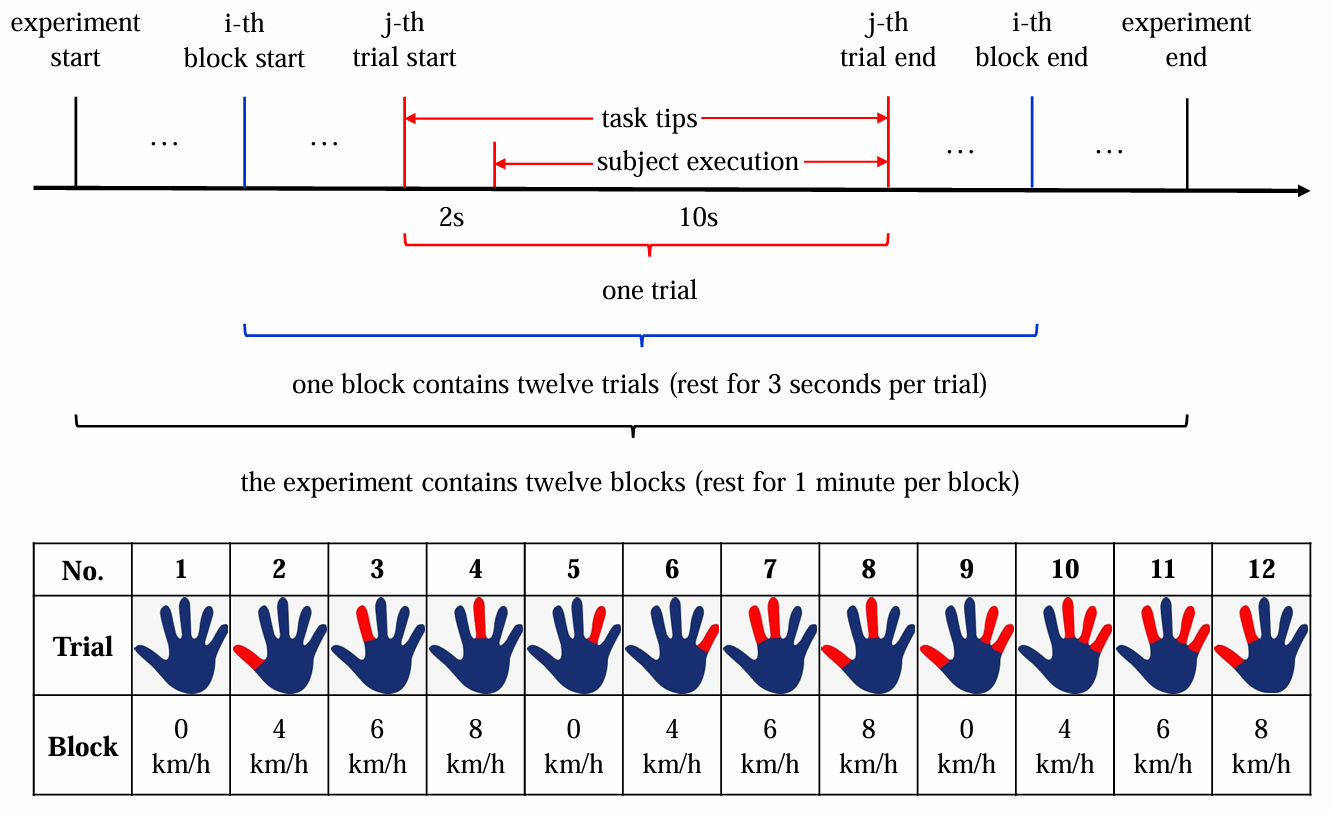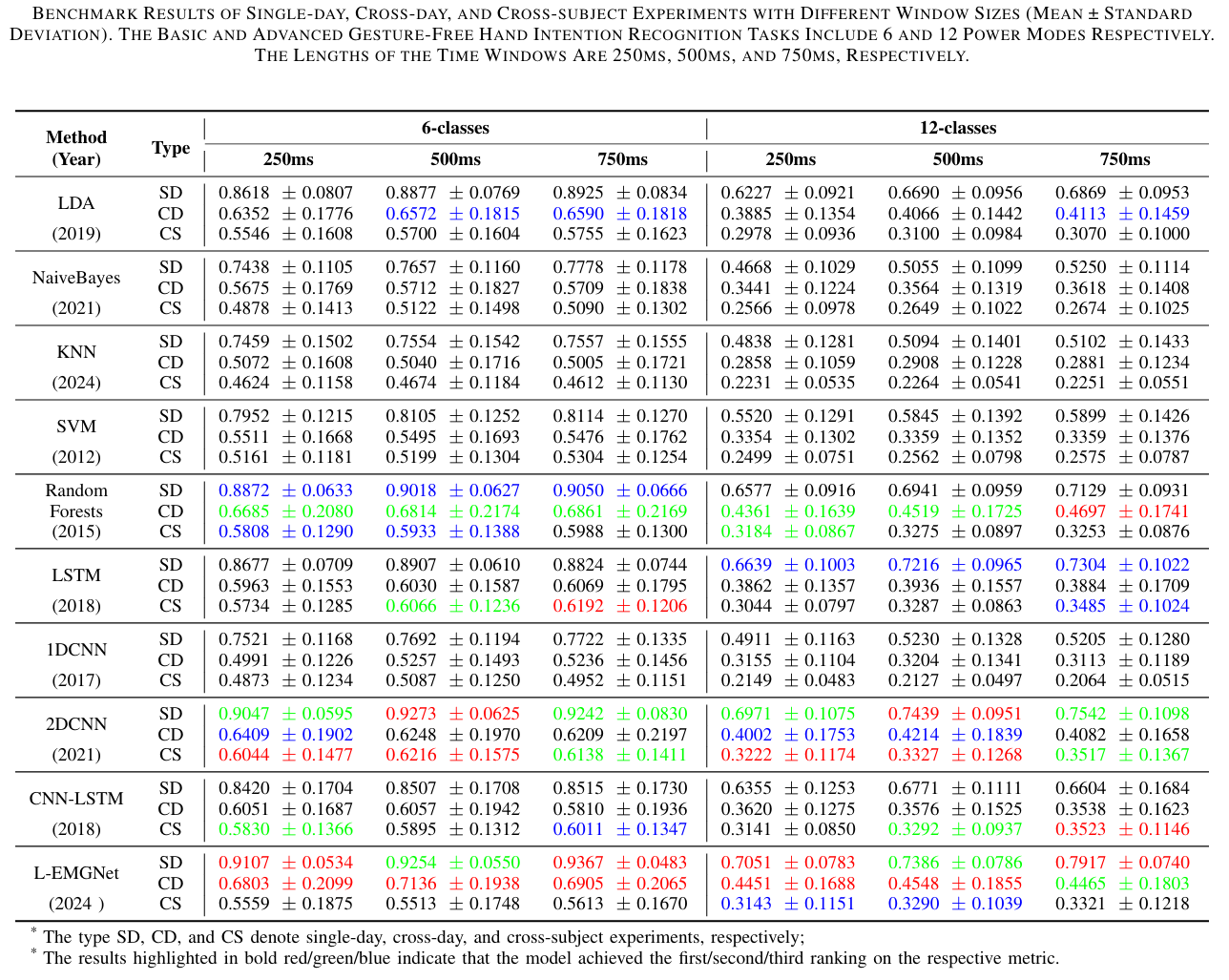In sensitive scenarios, such as meetings, negotiations, and team sports, messages must be conveyed without detection by non-collaborators.
Previous methods, such as encrypting messages, eye contact, and micro-gestures, had problems with either inaccurate information transmission
or leakage of interaction intentions. To this end, a novel gesture-free hand intention recognition scheme was proposed, that adopted surface
electromyography(sEMG) and isometric contraction theory to recognize different hand intentions without any gesture. Specifically, this work
includes four parts: (1) the experimental system, consisting of the upper computer software, self-conducted myoelectric watch, and sports
platform, is built to get sEMG signals and simulate multiple usage scenarios; (2) the paradigm is designed to standard prompt and collect
the gesture-free sEMG datasets. Eight-channel signals of ten subjects were recorded twice per subject at about 5-10 days intervals; (3) the
toolbox integrates preprocessing methods (data segmentation, filter, normalization, etc.), commonly used sEMG signal decoding methods, and
various plotting functions, to facilitate the research of the dataset; (4) the benchmark results of widely used methods are provided.
The results involve single-day, cross-day, and cross-subject experiments of 6-class and 12-class gesture-free hand intention when subjects
with different sports motions. To help future research, all data, hardware, software, and methods are open-sourced on the following website: click here.



